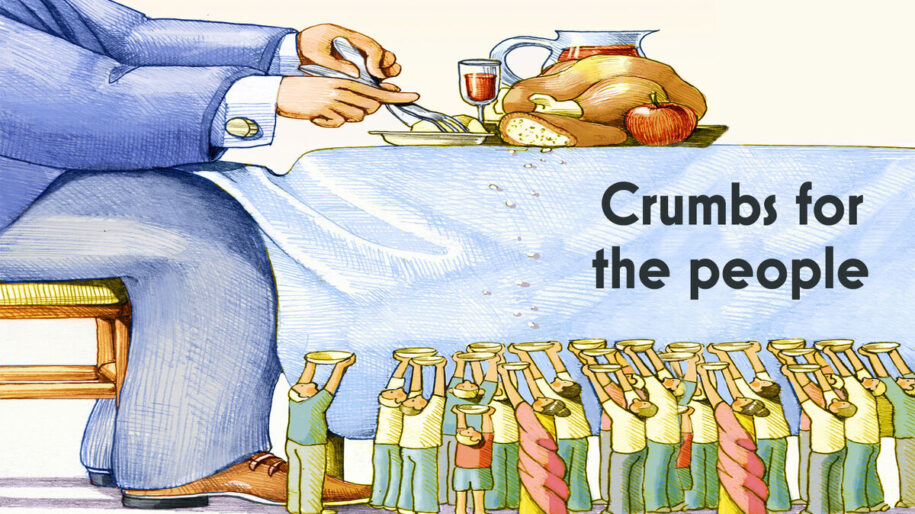The Mockingbird’s Mirror: Using Satire to Hold Up Society’s Crooked Reflection
Imagine a world where politicians campaign on platforms made entirely of whipped cream, where news headlines scream of fashion faux pas more urgent than war, and where social media influencers peddle self-worth by the gram. Sounds absurd, right? Yet, amidst the everyday, these absurdities often lurk, camouflaged by normalcy. That’s where satire steps in, not with a sledgehammer, but with a feather-dipped scalpel, gently carving away the facade to reveal the grotesque reality beneath.
Satire, the mockingbird of critique, mimics and exaggerates societal flaws, reflecting them back in a distorted, hilarious mirror. This distortion, however, does not blur; it clarifies. By stripping away the veneer of seriousness, satire forces us to confront the inherent ridiculousness of certain behaviors, beliefs, and systems. Its laughter cuts through complacency, igniting a dialogue about what needs to change.
Throughout history, the jester’s wit has been the dissenter’s weapon. Aristophanes lampooned Athenian greed and warmongering in his farces. Jonathan Swift skewered societal hypocrisy through Gulliver’s fantastical journeys. George Orwell, wielding satire like a scalpel, dissected the totalitarian menace in Animal Farm. Each of these literary giants used humor to hold up a crooked reflection of their times, urging audiences to laugh, then reconsider.
But satire’s power transcends the literary realm. Today, stand-up comedians skewer political blunders, late-night shows parody cultural trends, and memes become bite-sized social commentaries. These modern-day jesters, armed with digital platforms, reach wider audiences than ever before, fostering critical engagement with everything from political corruption to celebrity culture.
The effectiveness of satire lies in its ability to bypass our defensive walls. We may bristle at a direct attack, but laughter disarms us, allowing satire’s message to seep in subtly. As we chuckle at the absurdity of a caricatured politician or a hyper-exaggerated social trend, a seed of doubt is planted. We begin to question the normalcy of what we previously accepted.
Yet, satire is not a blunt instrument. Wielded irresponsibly, it can veer into offensiveness, targeting vulnerabilities instead of highlighting flaws. The true satirist walks a tightrope, balancing humor with compassion, ridicule with understanding. The goal is not to belittle but to awaken, to provoke laughter not at, but with, the human condition.

So, the next time you encounter a satirical piece, don’t simply dismiss it as a joke. Look beyond the humor, the exaggeration, the absurdity. See the reflection it holds up, the warped image of societal truths it reveals. And ask yourself: is that really who we are? Do we want to laugh? Or is it time to change the reflection – and by extension, the reality – itself?
Here are some additional points you can consider adding to your article to further enrich it:
- Types of satire: Analyze different forms of satire like parody, hyperbole, irony, and caricature, showing how each targets different aspects of social critique.
- Specific examples: Include specific examples of successful satirical works (books, films, TV shows, articles) and analyze how they effectively critique social issues.
- Impact and limitations: Discuss the potential impact of satire in terms of raising awareness, sparking change, and fostering critical thinking. Acknowledge the limitations of satire and potential criticism regarding offensiveness and oversimplification.
- The future of satire: Explore how satire is evolving in the digital age and its potential role in critiquing the challenges of modern society.
From Jester’s Court to Hashtag Rebellion:

Satire’s bite isn’t confined to dusty tomes and grand stages. In the digital age, its sting travels at the speed of Wi-Fi, amplified by the echo chamber of social media. Memes, tweets, and viral videos have become the slingshots of the modern satirist, taking aim at everything from political gaffes to cultural fads. The hashtag, once a mere categorization tool, has morphed into a battle cry, rallying legions of online jesters to skewer injustice with wit and irony.
This democratization of mockery has its strengths and challenges. On the one hand, it gives voice to previously unheard narratives, allowing marginalized communities to reclaim their agency through humor. Satirical hashtags like #BlackLivesMatter and #MeToo pierced through the echo chambers of privilege, forcing the world to confront uncomfortable truths.
However, the open access of the digital realm also breeds a new breed of satire – the quick-witted, often cruel jester, more interested in clicks than critical reflection. The line between playful mockery and harmful stereotyping can blur in the rush for viral fame. Cyberbullying masquerades as satire, punching down at vulnerable targets instead of up at the powerful.
This is where the responsibility of the audience comes in. Just as we navigate the news with a critical eye, we must approach satire with discernment. To laugh with, not at, the jester’s mirror, we must ask ourselves: Who is being targeted? What is the intent of the humor? Does it spark conversation or simply reinforce existing prejudices?
Beyond the Laugh: Satire’s Call to Action

The ultimate goal of satire, however, is not merely to amuse or provoke. It is to nudge us, prod us, even shove us out of our complacency. That uncomfortable laughter, the one that lingers after the punchline, is the catalyst for change. When we chuckle at the absurdity of a corrupt politician or cringe at the caricature of our own social media habits, a seed of doubt is planted. This doubt, nurtured by discussion and critical reflection, can blossom into action.
Satire serves as a bridge between awareness and action. It highlights the flaws, amplifies the voices of dissent, and ignites the spark of collective indignation. It pushes us to demand better, to hold our leaders accountable, to strive for a society that is less absurd, less grotesque, and more true to its highest ideals.
So, the next time you encounter a satirical jab, a meme that hits a little too close to home, or a stand-up comic’s biting commentary, don’t dismiss it as mere entertainment. Let it be a call to action, a reminder that laughter can be a potent weapon, a force for change in a world desperately in need of a good, hard look in the mockingbird’s mirror.
This concludes the main body of the article, but you can further consider adding the following sections:
- A call to action: Encourage readers to engage with satire responsibly, to analyze its messages, and to use humor as a tool for positive change in their own communities.
- Further exploration: Provide a list of resources for those who want to learn more about satire, its history, and its ongoing role in social critique.
- Humor with a heart: End on a hopeful note, reminding readers that satire, at its best, is not just about exposing flaws, but also about celebrating the human spirit and its capacity for self-reflection and improvement.
The Mockingbird’s Mirror: A Final Reflection
Satire, the mischievous jester of critique, holds up a warped reflection of our society, forcing us to laugh, then reconsider. From Swift’s biting wit to the viral mockery of hashtags, it dismantles complacency, ignites critical thinking, and paves the way for change. So, the next time you encounter a satirical nudge, don’t just chuckle and move on. Let it be a call to action, a reminder that laughter is a potent weapon, and the mockingbird’s mirror, though distorted, can show us the path to a better world.














